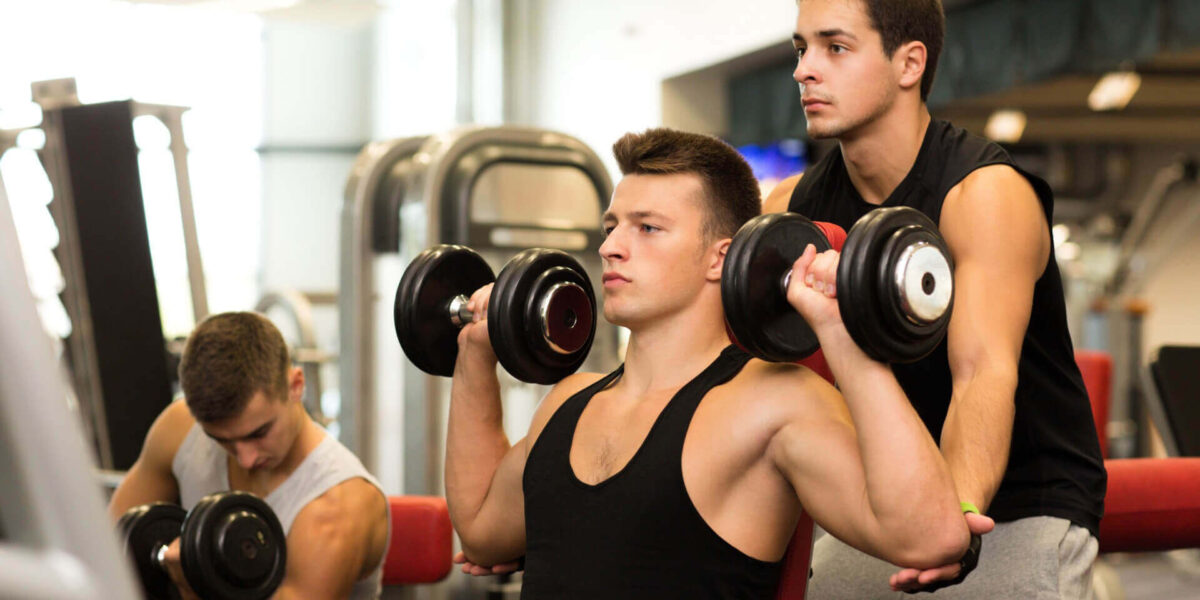A good full-body gym workout should take 30-60 minutes. In general, I do think full-body is usually the way to go, but sometimes performing an extensive full-body training session just isn’t realistic. Maybe you’re short on time, or maybe you have a specific athletic reason to want to focus on some body parts over others. Maybe a certain muscle group is measurably underactive and lagging behind the rest.
Then again, maybe arms are your favorite body part and you just want to develop them a little more when you’re already tight on time. Plus, a little extra arms can go a long way on those hanging, swinging, pulling, and lifting movements out on the Spartan course.
Related: This Is the Best Workout to Do Before a Spartan Race
If you feel like just doing arms once or twice a month when you only have 20 minutes or so, try this quick arm workout to get stronger and build muscle.
6 Arm-Focused Exercises (and How to Do Them)
There are six movements in this workout, and while they’re not complicated, understanding the rationale and proper form behind each one before you actually begin the workout is crucial to injury prevention.
As with any workout, you want to start with more compounded exercises and do the isolation movements later. Of course, this workout is heavy on isolation movements, but compound movements still contribute to arm growth and can target different muscle fibers in your arms, so you still want some of them.
Parallel Grip Pull-Ups
Regular pronated-grip pull-ups are a great upper back and rear deltoid exercise, but not the best variant for arms in general. Chin-ups are better for the mid-back and biceps, but a lot of exercises are good for biceps.
I like the parallel grip because it focuses better on the brachialis. This muscle is the Tesla to the biceps’ Edison — stronger, but the biceps always gets the credit.
Related: 3 Ways to Start Doing More Pull-Ups
As with all chin-ups and pull-ups, the key here is to use a full range of motion and keep your torso straight without excessive wiggling.
Dips
Like pull-ups, dips are compounded, in this case working both the triceps and lower pectorals. Building the pectorals will push your arms out when they hang at your sides, contributing to the appearance of broad shoulders and big arms (even if you don’t necessarily have either).
Use a wide grip if possible. Other than that, the main form note here is to lift slowly and smoothly; don’t explode upward and risk hyperextending your elbows.
Butterfly Lat Raise
The lesser-known but superior version of the lateral raise, the butterfly lat raise is slightly more compounded and, more importantly, has a full range of motion, as the weights go all the way over your head.
If you’re wondering why a shoulder-focused exercise is included in an arm workout, it’s because building your medial deltoids creates visible separation between your shoulders and arms. Again, this will make your arms look bigger, even though they’re not part of your arms.
Be sure to lean slightly forward while performing this exercise, and allow for smooth shoulder rotation as the weights are raised and lowered.
Related: The 20 Best Exercises for Your Shoulders
Zottman Curls
With any exercise, you can lower more weight in a controlled manner than you can lift in the first place. Some machines take advantage of this by raising the weight at the top of the movement so you have to lower a heavier weight.
The Zottman curl achieves the same effect by changing the exercise halfway through. It’s a dumbbell curl on the way up, and a dumbbell reverse curl on the way down. Note that unlike the butterfly lat raise, the weights are rotated during the pause at the top, not while moving.
Barbell Reverse Drag Curls With EZ Bar
Barbell reverse curls offer a slightly better range of motion than regular barbell curls, and also engage the brachialis more effectively. Drag curls extend the range of motion a little more by moving the weight upward rather than into the chest. They also keep the effective weight more constant by maintaining a consistent upward angle against gravity rather than a curved trajectory.
The key form note here is to hold your torso steady and avoid throwing your body weight into the movement.
Cable Triceps Pull-Down
This is the best triceps isolation exercise for safely isolating the triceps. That is, it doesn’t cause elbow pain for many people the way dumbbell triceps presses do.
Related: 3 Time Under Tension Techniques to Build More Muscle
Again, the main form note here is to simply hold your torso steady. However, you also have to make sure to lower yourself enough — and avoid excessively bending over at the same time — so as not to eliminate the uppermost part of the movement.
A Quick, 20-Minute Arm Workout
The exercises in this workout are arranged in pairs — three pairs of exercises and two sets per exercise — where you’ll alternate exercises in each pair. For example, do A1, A2, A1, A2, then B1, B2, etc.
Rest 60-90 seconds between exercises.
A1) Parallel Grip Pull-Ups: 2 sets to failure
A2) Dips: 2 sets to failure
For both of these exercises, if you can do more than 12 reps, add weight using a weight belt if one is available. If you can’t do at least three clean reps, use an assist machine to effectively lower your weight.
B1) Butterfly Lat Raise: 2 sets of 8-12
B2) Zottman Curls: 2 sets of 12-15
C1) Barbell Reverse Drag Curls: 2 sets of 8-12
C2) Cable Triceps Pull-Down: 2 sets of 12-15
Try squeezing this workout in when you don’t have time for a full gym session, or when you know your lower body will already be exhausted from doing a long run or other type of cardio.


